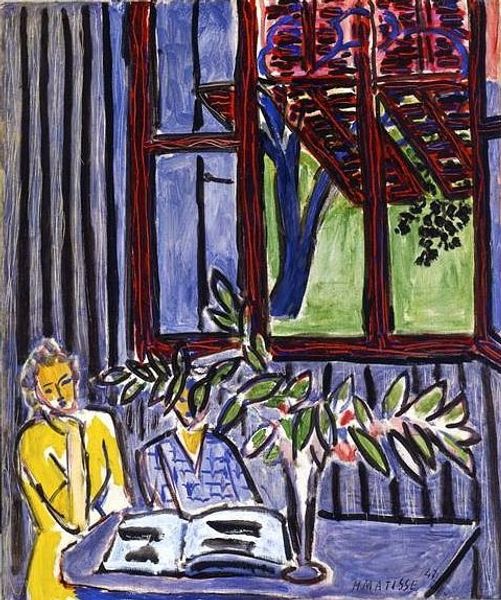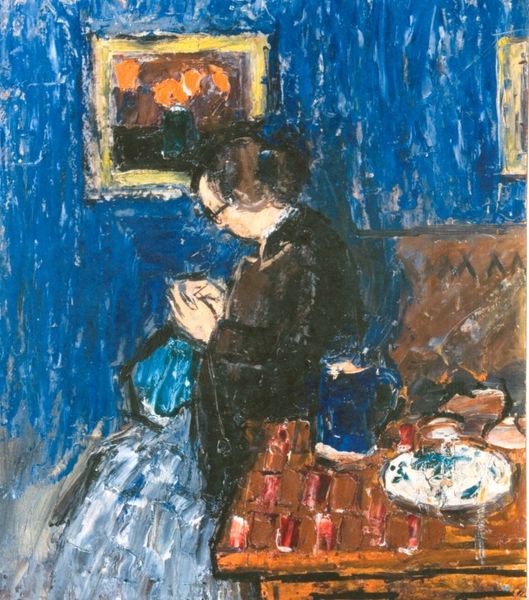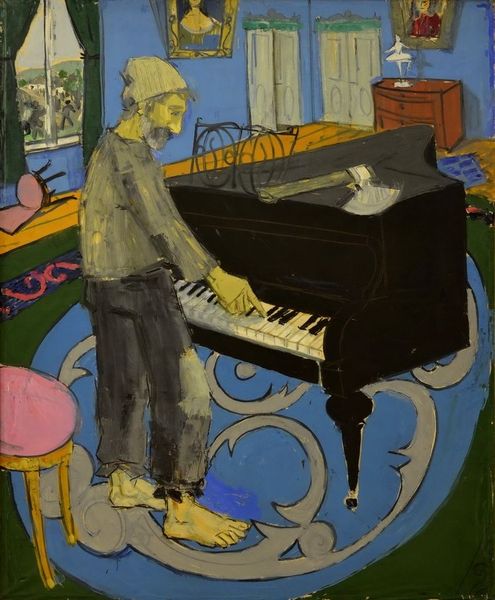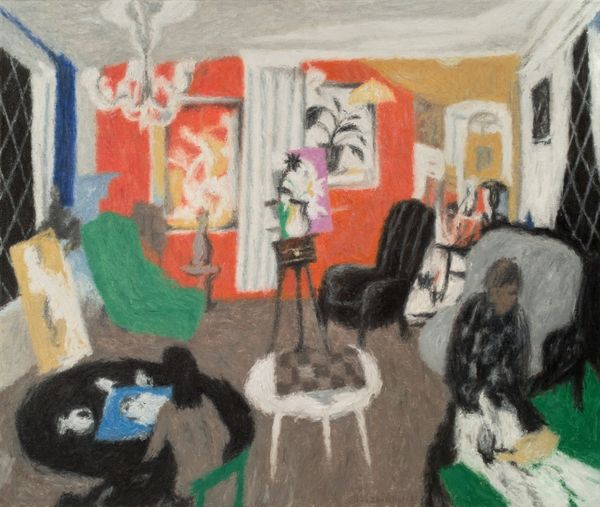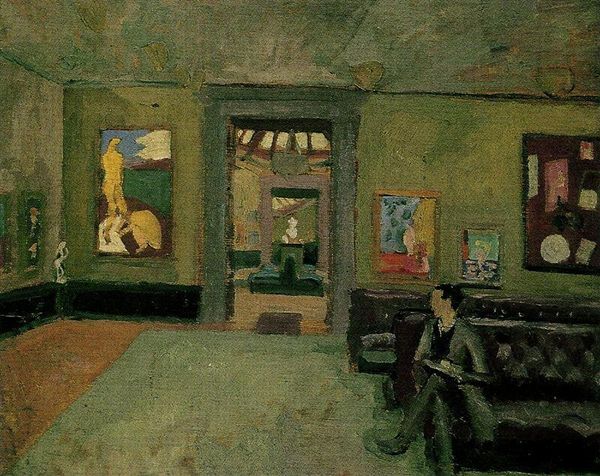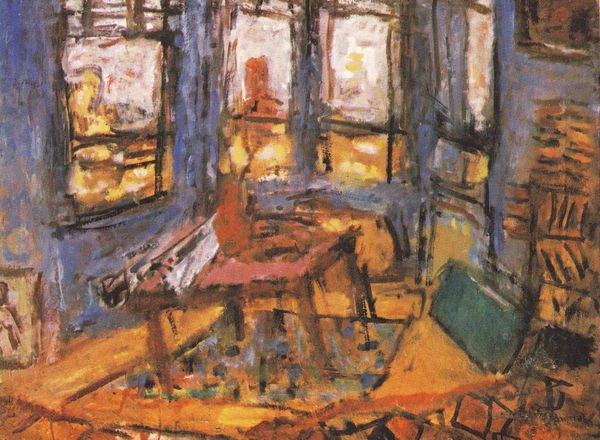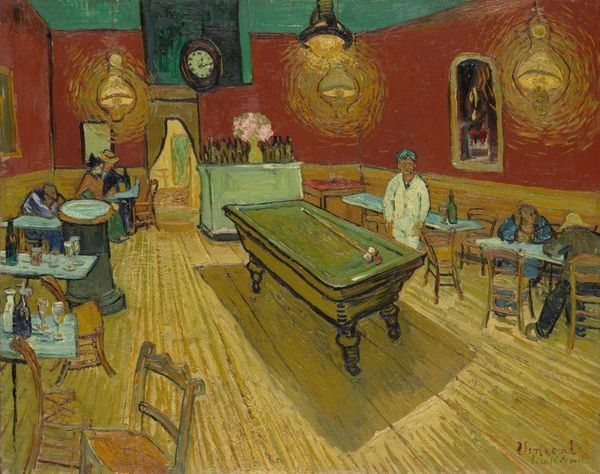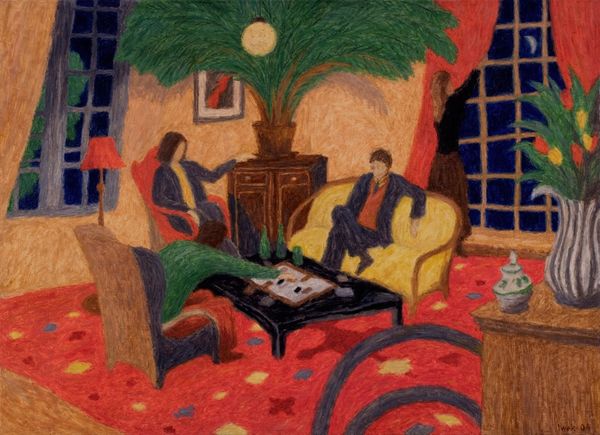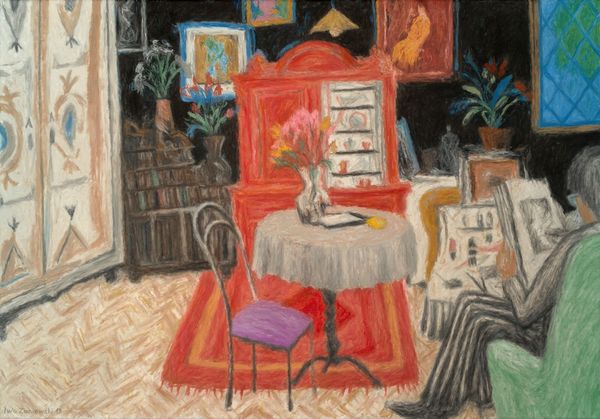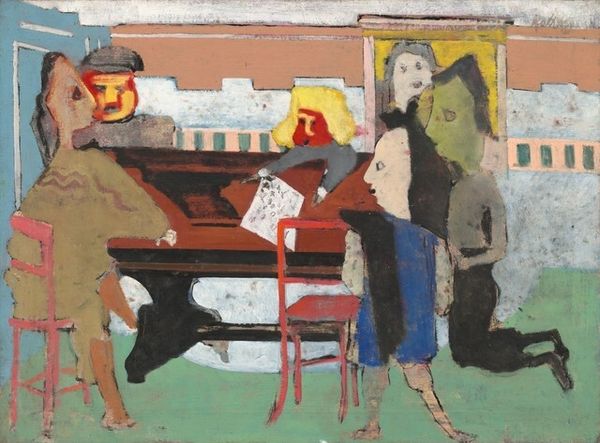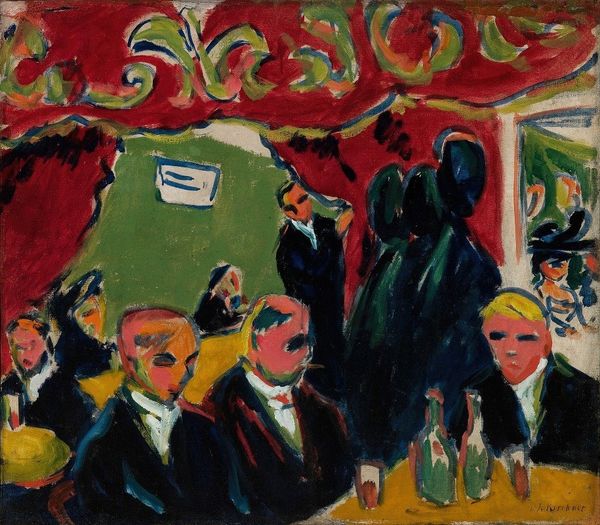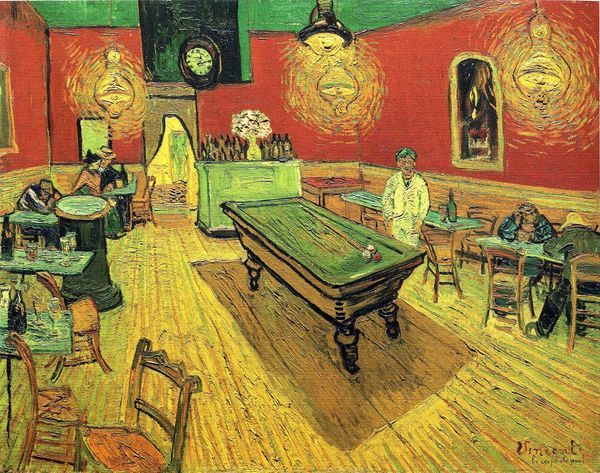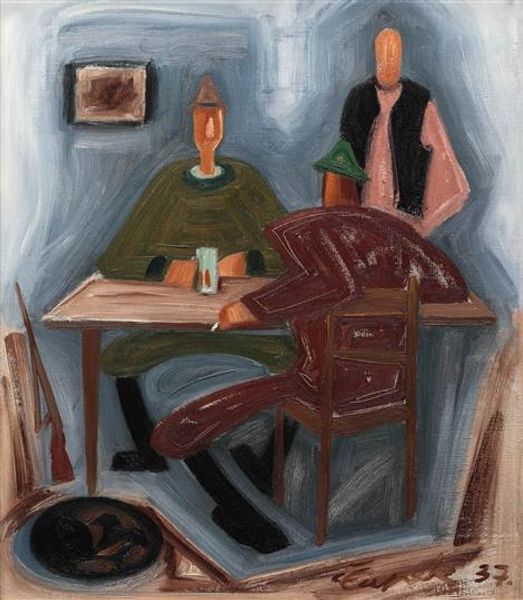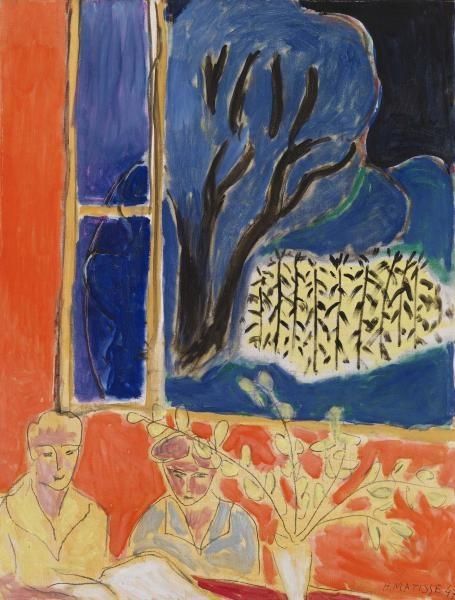
oil-paint
#
portrait
#
oil-paint
#
oil painting
#
expressionism
#
portrait art
#
self portrait
Copyright: Public domain
Editor: Walter Gramatté's "Girl at the keyboards" from 1922, done in oil paint, is a striking painting. The overall blue hues create a somber mood, while the mirrored reflections add a layer of complexity. How would you interpret this work? Curator: The somber tones are definitely worth noting. The blue, repeated and almost oppressive, acts as a veil. But what's behind it? Look closely at the girl; we don't see her face, but she's framed by reflections of figures in mirrors. It evokes the self being constructed and reflected back in fragments. Think of how portraiture, for centuries, served to immortalize the sitter but also establish an identity. What happens when that is fragmented? Editor: So you’re saying the mirrors are more than just decoration? They suggest identity is fragmented, not fixed. Curator: Precisely! Gramatté, deeply rooted in Expressionism, may be visually expressing anxieties of self, during a time of great societal shifts. The keyboard, too, acts as a mechanism for expression, but here the sound is silent, unseen. Ask yourself: is she imprisoned or liberated by these many reflections of the self? Editor: I never considered the social context and the symbolism of reflection like that. Seeing it as fragmentation really unlocks a new understanding. Curator: Indeed. And reflecting on the use of mirrors in art, throughout time, from Van Eyck’s Arnolfini Portrait to contemporary installation art, tells us a lot about what humanity thinks about its own image and its relation to reality. Editor: It's incredible how a seemingly simple scene can reveal such depth when we explore its symbolic and historical layers. Thanks!
Comments
No comments
Be the first to comment and join the conversation on the ultimate creative platform.
